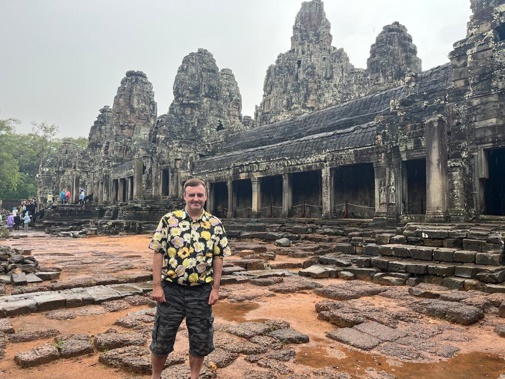
The very name Siem Reap conjures images of one stellar temple: Angkor Wat, the most beautifully preserved structure within the entire Angkor Archaeological Park complex, which spans a whopping 800 sq kms. A symbol of extraordinary artistic mastery and spiritual devotion, wrapped in a sprawling moat and accessed via a sweeping causeway, drawing you into its postcard entrance. But with over 50 Angkor temple ruin sites now reclaimed from the jungle and opened, Angkor Wat is just the beginning. (Many others are still submerged, and some are out of bounds because of the insidious presence of land mines.) With such a bewildering array of temple-touring options on offer, knowing what to see and where to go, to get a rich flavour of Angkor’s diverse delights needs expert guidance.
Enter Wendy Wu Tours, who ponied me up with an exuberant local guide Lin Ran, who deftly led me around a curated selection of enticing temple ruins. We hot-footed it north to Angkor Thom, by air-conditioned SUV, well before the heaving hordes descended on the scene. Translating as “Great City”, this walled and moated royal capital was the last constructed under the Khmer empire, by King Jayavarman VII, in the 12th century. Lin Ran led me to the sublime South Gate, where on either side of the road, a stone causeway is flanked in 108 sculptured demons and gods, locked in a tug of war with a nine-headed snake, in a scene played out from Hindu mythology.
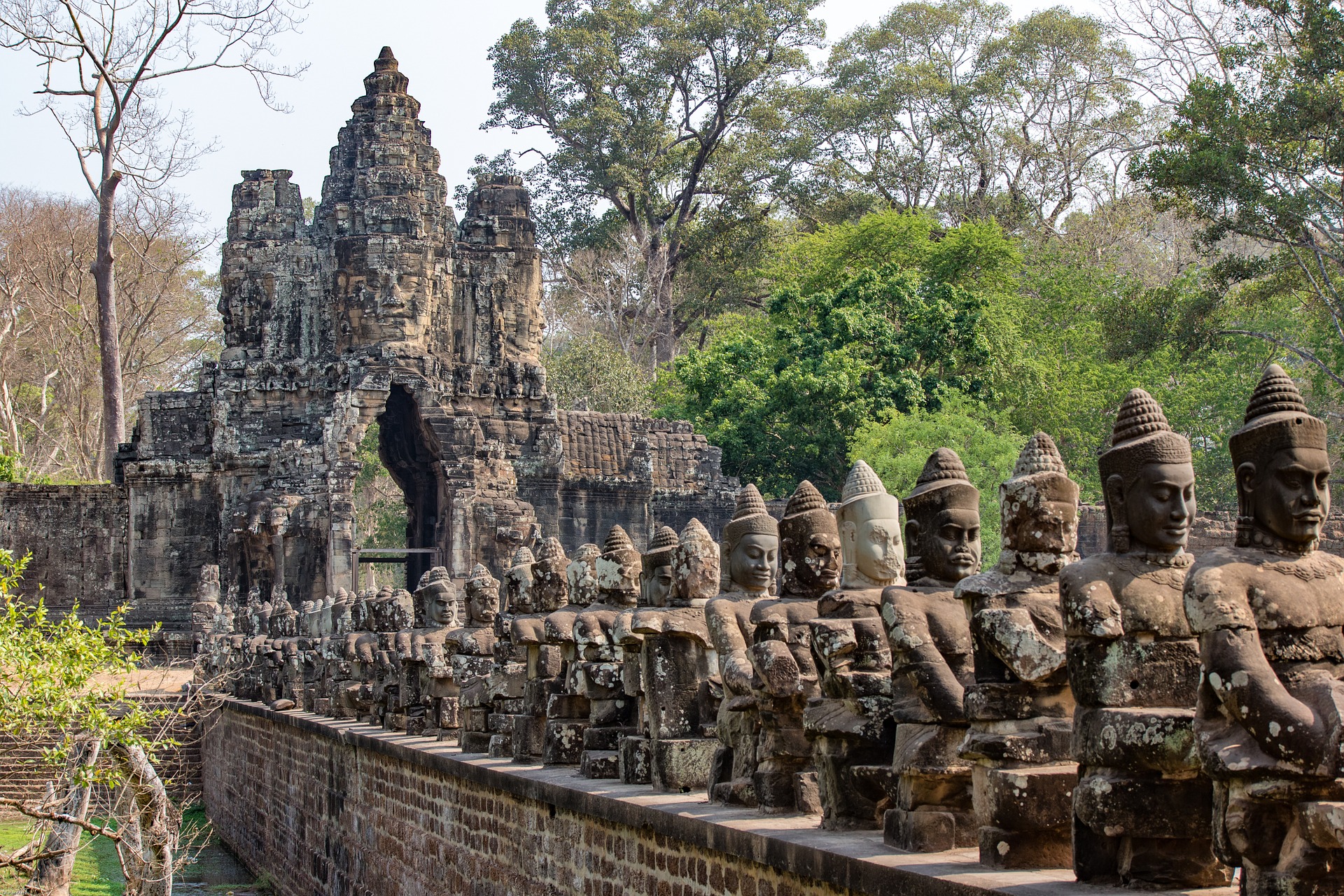
Like Angkor Wat, Angkor Thom is surrounded by moats, which were principally designed as an engineering measure – not as fortification. The body of water helped maintain the structural balance of the sandstone foundations of the temple complex, combating the threat of stones cracking and slumping. Once inside the South Gate, shafts of golden sunlight streamed through the leafy forest, as cheeky monkeys scampered about and cicadas droned lustily, after the dawn showers.
Beyond the forest glade, I stood before the prize draw, Bayon Temple, stunned and bedazzled. It is like nothing else in the land. You may well recognise it from Lara Croft: Tomb Raider. A magical, eerie, and mysterious place, where 54 sculpted towers pierce the skyline, extravagantly carved with curiously smiling faces, as enigmatic as Mona Lisa. In fact, many locals refer to Bayon as the Mona Lisa of Southeast Asia. No fewer than 216 carved faces, in deep-relief, infuse the temple with a soothing, feel-good calm.
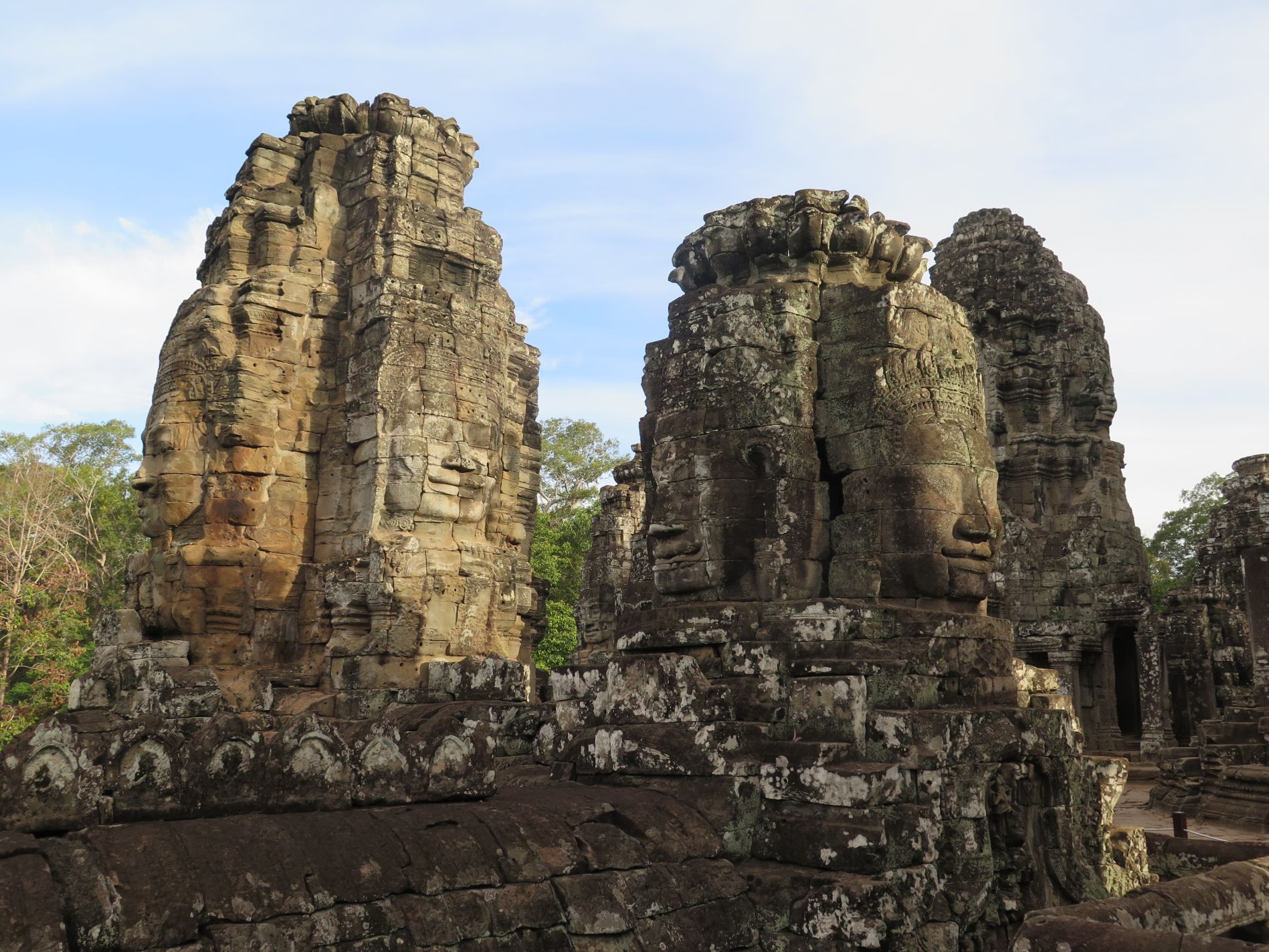
It’s the same face, masterfully replicated, with a broad forehead, slightly curved lips, downcast eyes and wide nostrils. On the third level of the temple, your zoom lens will have a ball capturing these endearing carvings. The face is believed to be a depiction of the king, himself. Donald Trump would approve. The large central tower, or Prang, is pockmarked with 16 small coves, where kings and high priests would meditate. After being abandoned in the 16th century, in 1933, French archaeologist George Groslier excavated the main prang only to unearth a colossal statue of King Jayavarman hidden underneath.
As we continued exploring the temple, we interacted with beaming elderly matrons selling Buddhist incense sticks, giving you the opportunity to make offerings, in a very non-pushy, Buddhist way. I also lapped up the bas-relief galleries speckling the temple, depicting an empire full of stories and legends, illustrating warfare and spirituality. Check out the grisly images of crocodiles eating the carcasses of fallen soldiers. What a way to go.
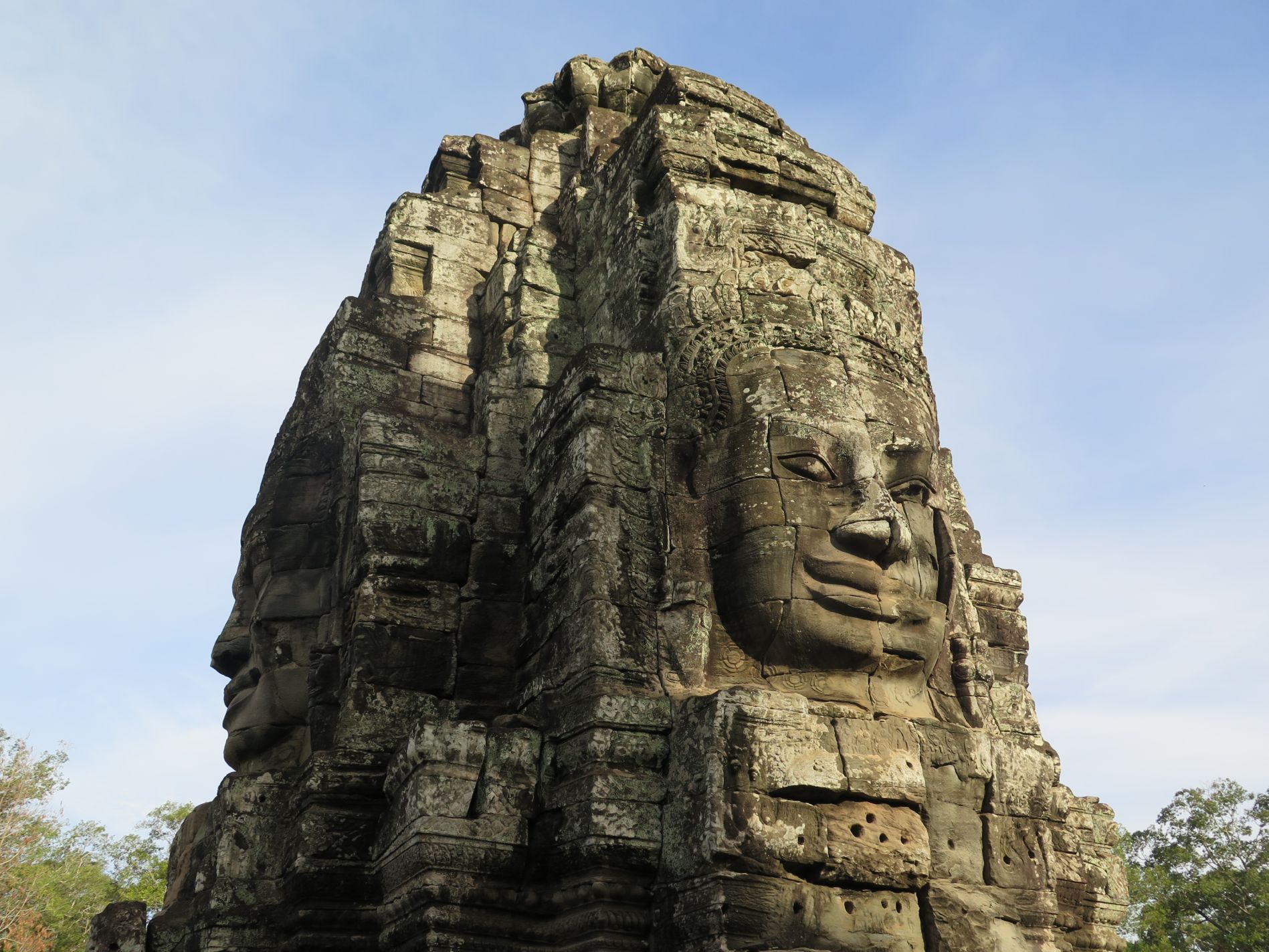
You’ll glimpse spear-toting Khmer soldiers riding elephants, a crouching lady getting burned on a fire, a man handing a turtle to a chef and soldiers sacrificing a buffalo to ensure good luck in battle. As much as Angkor Wat is monumentally magnificent, it’s the drama, humanity and personality of Bayon Temple that make it such a heart-stealer – and my favourite Angkor temple.
Beyond the beauty of Bayon, head to the beautifully lush royal square in the Angkor Thom complex for some endearing spectacles. The Royal bathing pools are colossal. One was reserved for the King, while the other was the ladies pool, where his 500 concubines would take to the water. The Elephant Terrace was the long performance terrace of the King, so named because of its exquisite reliefs of elephants, whose trunks double as decorative columns. The 350 metre long concourse serves up a theatrical carved medley of circus acrobats, wrestlers, and images of hunting elephants in the wild.
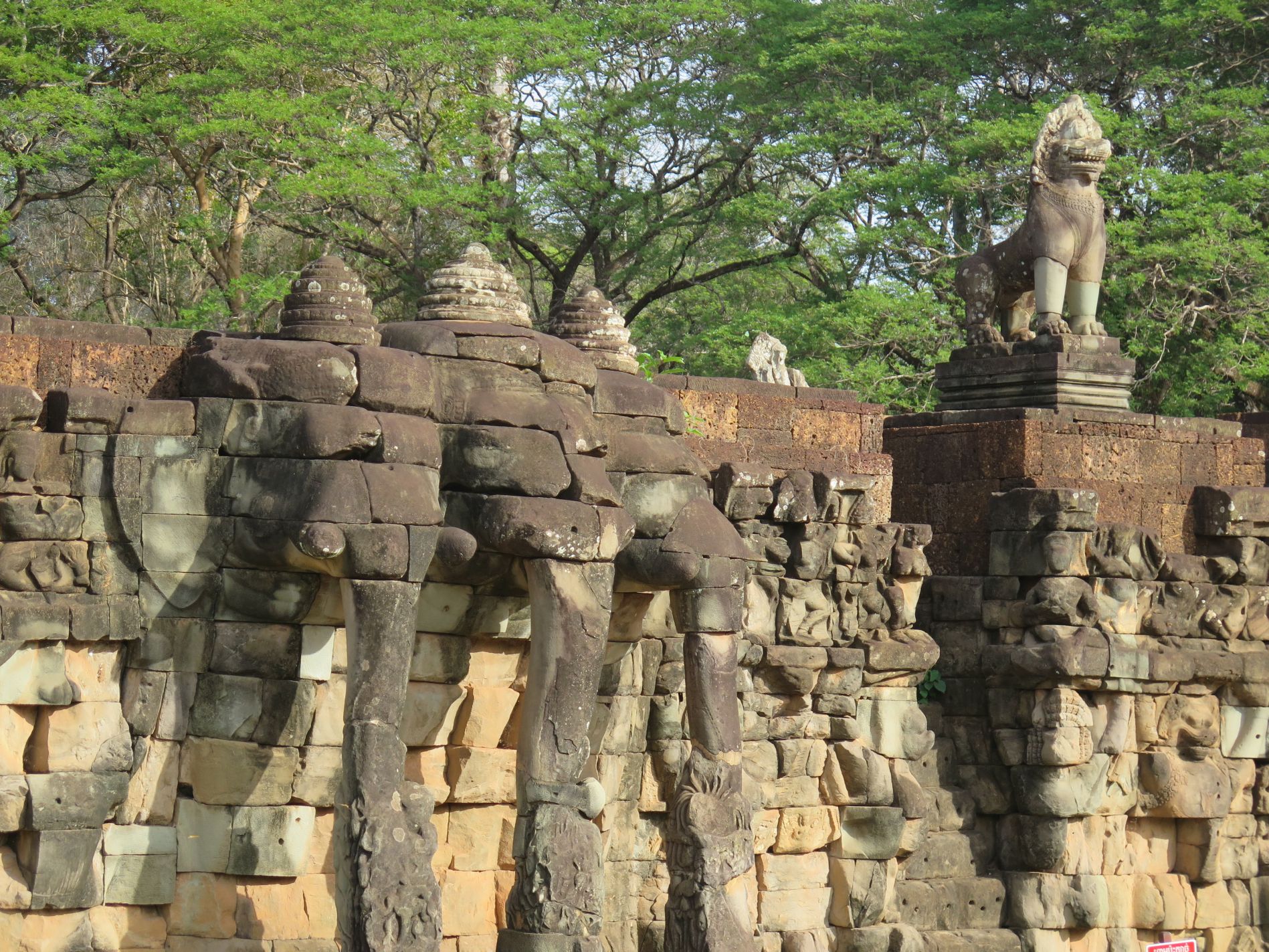
Right next door is the Terrace of the Leper King, covered with relief carvings and topped with a statue of the naked Leper King on the platform. Who was the Leper King? Mystery surrounds his origin, with a slew of theories, including the claim that the statue got its name merely because of the lichen which grows on it. Whatever the truth, it’s another essential photo-stop in Angkor Thom.
In addition to the top-billing temples, revel in the pocket-sized structures, that beckon like single stitches in time’s eternal tapestry. Two of the best include the human-scaled Preah Khan, built by King Jayavarman VII and the place he called home, during the construction of the Bayon. The temple is a monastery with lots of meandering galleries and side rooms with broken statues. Many Buddha reliefs here have been chiselled off, by the Khmer Rouge and opportunist tomb raiders. My highlight were the interior walls lined with cross-legged, bearded forest hermits in relief.
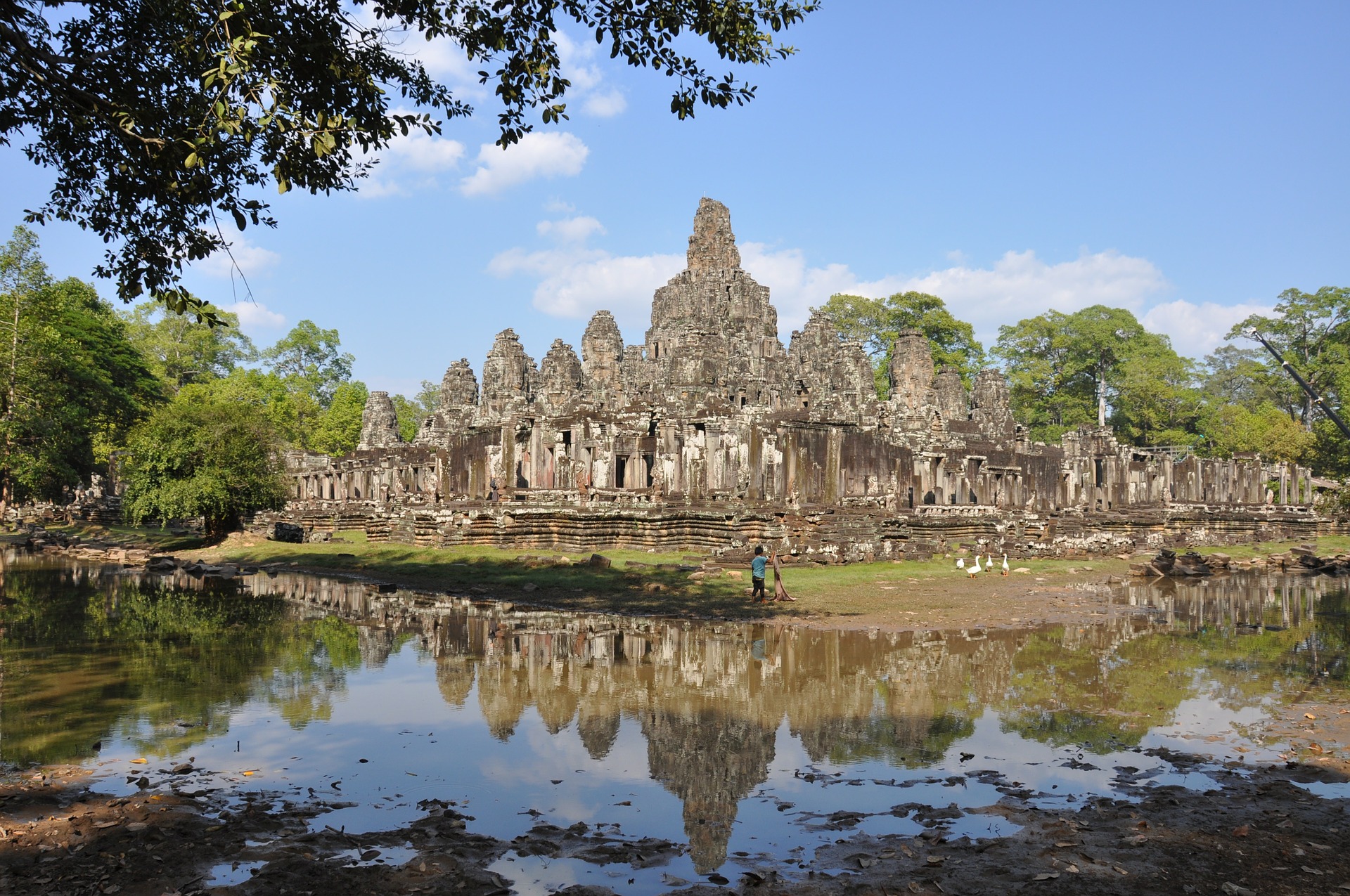
And don’t miss one of Angkor’s most striking spectacles – Ta Prohm. Widely regarded as the jungle temple, this Angkor ruin has deliberately been left untouched from nature’s march, wildly molested and monstered by the towering tentacles of trees, vines and tree roots, devouring half-collapsed structures. Nicknamed the “Tomb Raider temple”, it captured the world’s imagination in the Lara Croft blockbuster.
Thick roots of fig, banyan and kapok trees zigzag through the floor and clamber up walls, nibbling at doorways, all but consuming the built environment. There is a beauty to the brutality. It is a temple held in the stranglehold of trees, where stone and wood clasp each other in grim hostility, like petrified wrestlers, struck motionless in the middle of a fight. Hauntingly silent and still, it gives you a tangible taste of the astonishment the early explorers must have felt when they came upon these monuments in the 1860s, like Henri Mouhot who ""rediscovered"" the legacy of the ancient Khmer civilisation.
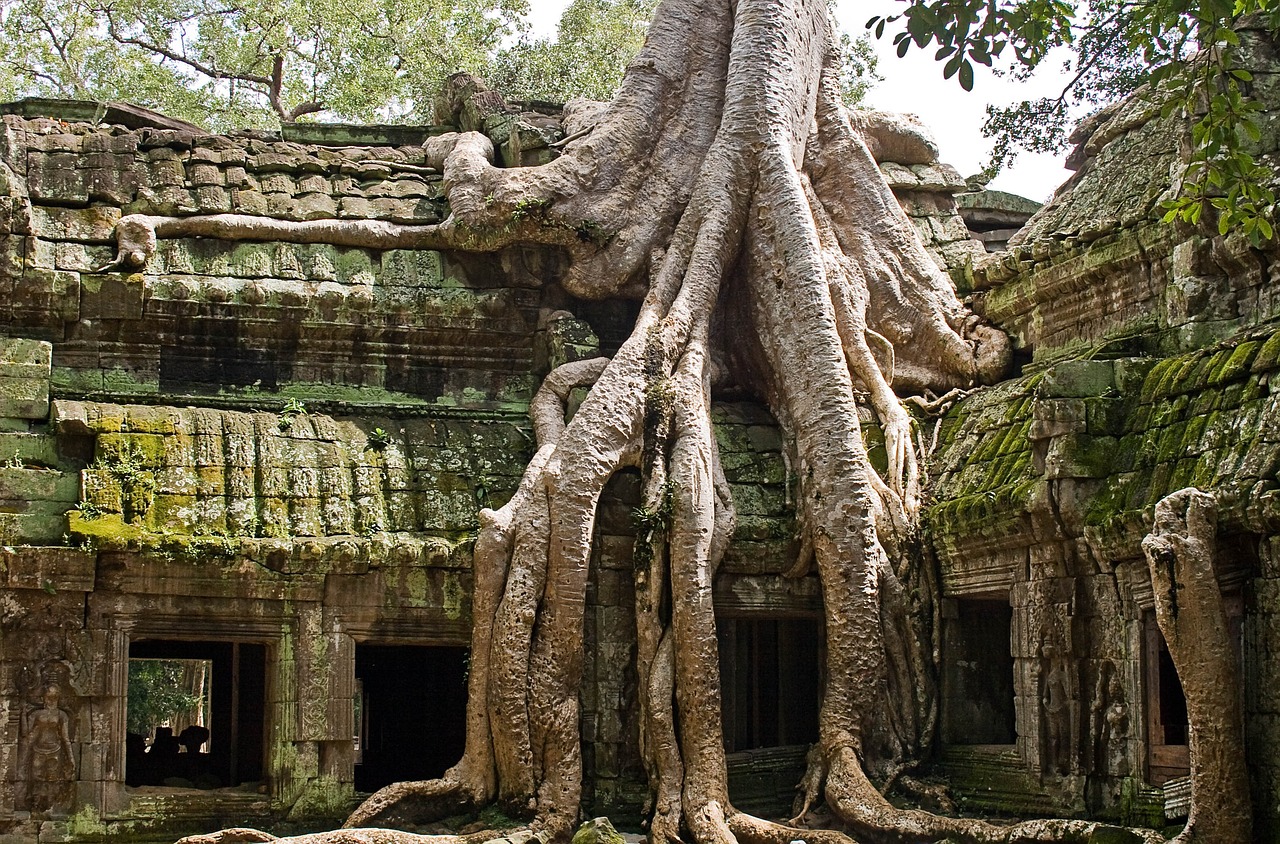
Wendy Wu Tours offers a wealth of touring options in Cambodia, whether you’re looking for an extensive multi-day journey or private day-trip, threading together all of the essential sights with flexibility for personal exploration. The on-the-ground local expertise was exceptional. You’ll love the passion, informality and knowledgeable insights of your guides. Book a touring option that best suits your desires. www.wendywutours.co.nz
Travel the world with the trusted name in travel insurance, Cover-More Travel Insurance, which has you covered with added safeguards, over and above the typical travel cover, for the likes of medical treatment. In addition to single-trip cover, multi-trip annual cover is now back on offer, wherever you want to go. Check out the full range of protections and tailor the level of cover to your requirements. Cover-More’s 24 hour global assistance centre is just a phone call away. www.covermore.co.nz
Mike Yardley is our resident traveller on Jack Tame Saturday Mornings.
Take your Radio, Podcasts and Music with you









